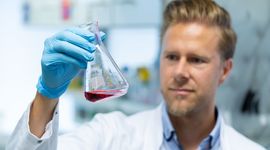An overview of current cell and gene therapy approaches for inherited skin diseases
New scientific publication with EB House contribution
Currently, there is no cure for the more than 200 known genetic skin diseases that underlie a gene mutation leading to a non-functional protein. Major advances in gene and cell biology made in the last decades have led to a few ex vivo gene therapy approaches applied in patients suffering from skin diseases. Researchers from Italy and the EB House Austria have summed up these strategies and other promising therapies in development in a review article published in Cold Spring Harbor Perspectives in Biology.
Current ex vivo skin gene therapy uses a virus that serves as a “gene taxi” to deliver an intact gene into patient’s own skin cells in the lab, followed by generation of a healthy skin layer, which is transplanted onto wounds. It has soon become clear that the presence of corrected skin stem cells in the transplanted skin is crucial to ensure its permanent regeneration, since they renew themselves a lifelong and generate new skin cells.
Since the early 1980s, skin stem cells have been transplanted onto patients suffering from massive burns. Twenty years later, the first gene therapy trials were initiated using genetically corrected blood stem cells to treat immune-related diseases. These studies showed excellent clinical results but also serious setbacks, which led to very strict safety requirements for gene therapy treatments. The resulting improved protocols paved the way for the few ex vivo gene therapies recently applied in JEB and RDEB patients. Whereas this treatment was overall successful with no side effects in the treated JEB patients, and even lifesaving for one JEB child, the same protocol used in RDEB patients did not lead to a long-lasting wound closure. One major challenge is the isolation of stem cells from RDEB skin. Thus, approaches have been developed to reprogram normal skin cells into artificial stem cells. However, for their use in the clinics, safety aspects still need to be clarified.
These studies made clear that the success of a therapy depends on the individual characteristics of the patient. The currently most promising personalized ex vivo gene therapy uses the modern and virus-free gene editing method CRISPR. Until its clinical application, however, assessments of safety and efficacy are still required.
To access the full article please click here.
